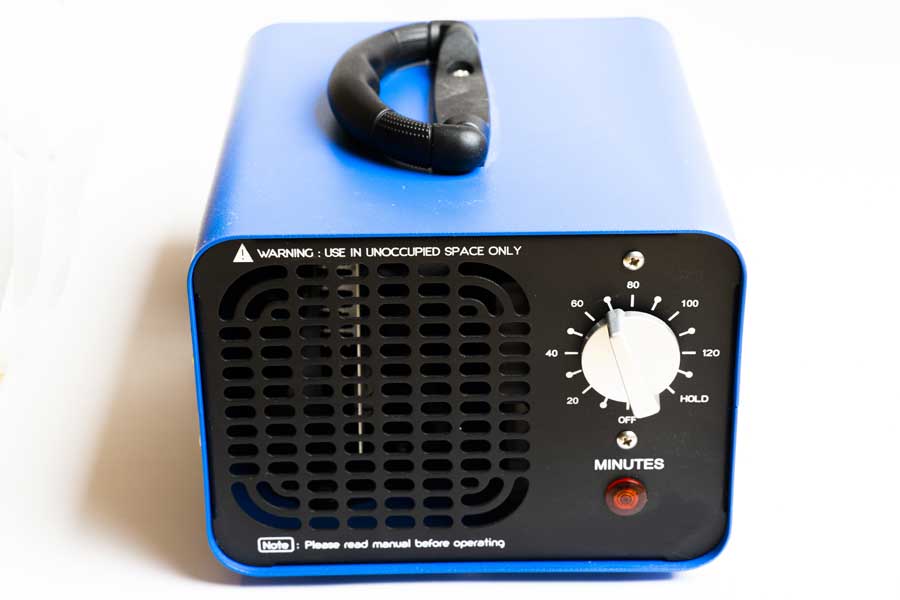An ozone generator is a machine that releases ozone into the air to remove stubborn odors and pollutants from the air.
Many commercial businesses, hospitals and restaurants use these generators effectively in large spaces. You can rent ozone generators for your home to remove smoky, musty, and other potentially hazardous pollutants from your home.
Because it works by increasing ozone levels, is an ozone generator really safe to use in your home?
Find out about the benefits and drawbacks of an ozone generator.
How an Ozone Generator Works
The air we breathe in each day is known as dioxygen, also known as 02, because it’s comprised of two oxygen molecules.
Ozone is a trioxygen, or “03”, which is made up of three oxygen molecules. It’s that third molecule which makes ozone unstable in both good and bad ways.
An ozone generator works by extracting dioxygen (02) from the air, and then gives it a strong electrical charge to change its molecular structure to trioxygen (03) or ozone.
Once that third molecule is present, it attaches to bacteria, odors, mold, viruses or smoke, then destroys these pollutants and contaminants. Once destroyed, the ozone reverts back to a highly reactive version of dioxygen, or the air we breathe.
The Biggest Benefit of an Ozone Generator
On the good side, ozone can and will attach to and eliminate strong airborne pollutants. This trioxygen also has the ability to attach to bacteria, viruses, and mold spores.
Once it does, whatever the ozone attaches to is instantaneously destroyed. This makes it a great tool to quickly eliminate odors, clean indoor air and kill mold spores.
Potentially Serious Health Issues Caused by an Ozone Generator
The Environmental Protection Agency (EPA) monitors and has identified ground-level outdoor ozone as one of six of the most dangerous pollutants.
When ozone levels reach dangerously high levels, ozone level warnings are issued and those suffering from breathing and lung conditions are advised to stay indoors.
The red flag here is when the generator takes the oxygen you breathe and molecularly converts it to ozone to clean and deodorize the air. From there, it reverts back to a highly reactive contaminated version of dioxygen which is airborne and inhaled.
When reactive molecules like ozone are inhaled, it’s possible for your body to experience a serious negative reaction.
Reactions to inhaling increased levels of ozone-infused air include coughing, difficulty breathing, chest pain and throat pain. It’s especially dangerous to those suffering from asthma, allergies, lung disease or compromised immune systems.
If using an ozone generator, everyone living in the home including pets should vacate the home while the generator is operating. This is to avoid the risk of inhaling contaminated airborne ozone molecules.
Conclusion
While using an ozone generator every once in a while may not be a big deal, there may be some healthier, less risky options available to you.
For recommendations on how to remove smoke, musty smells, strong lingering odors or improving overall air quality, reach out to the clean air specialists at Dale HCS in Santa Rosa.

